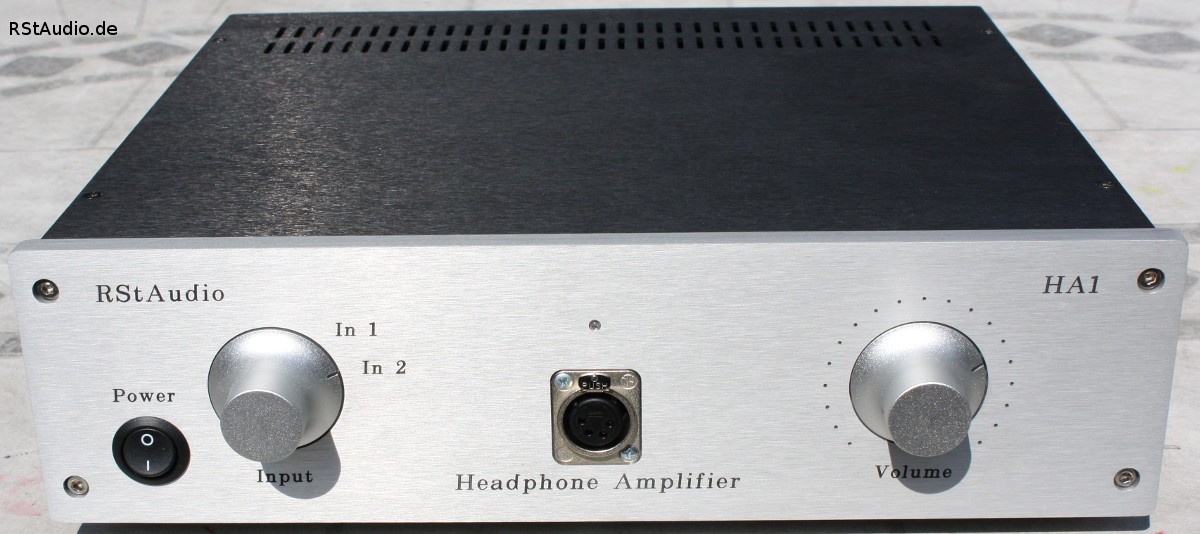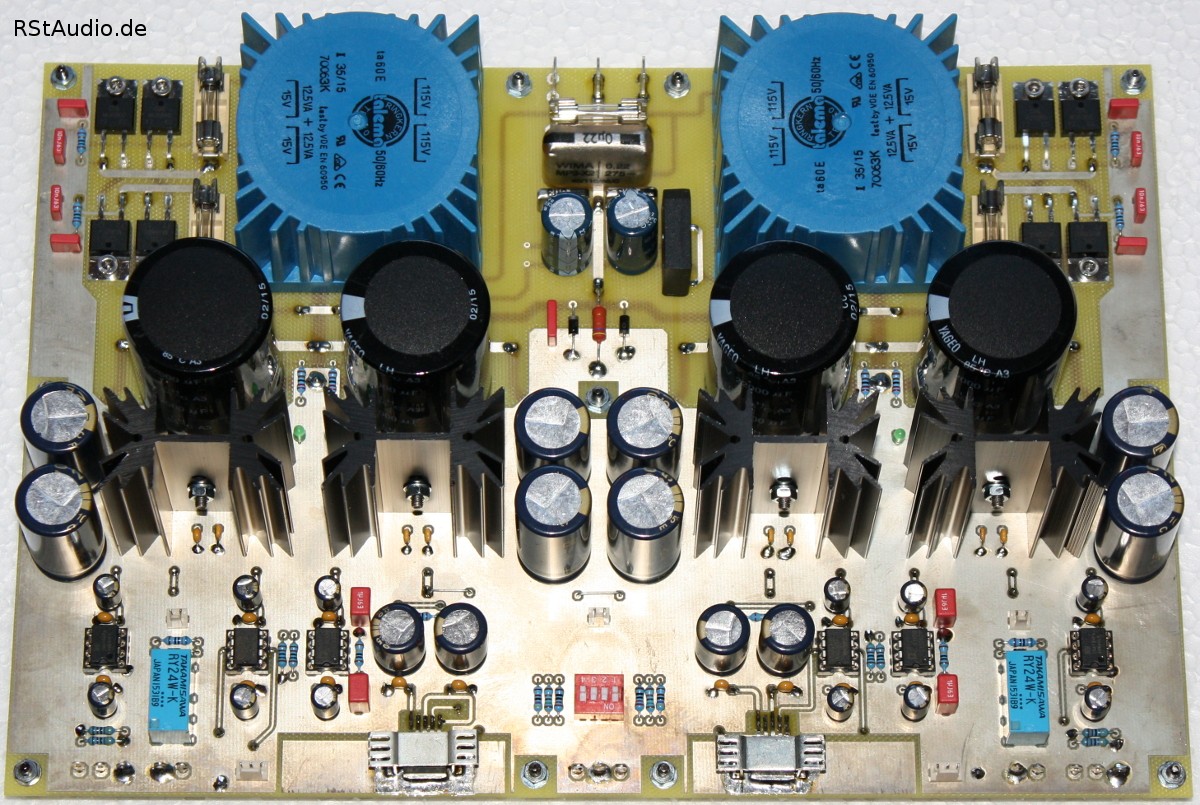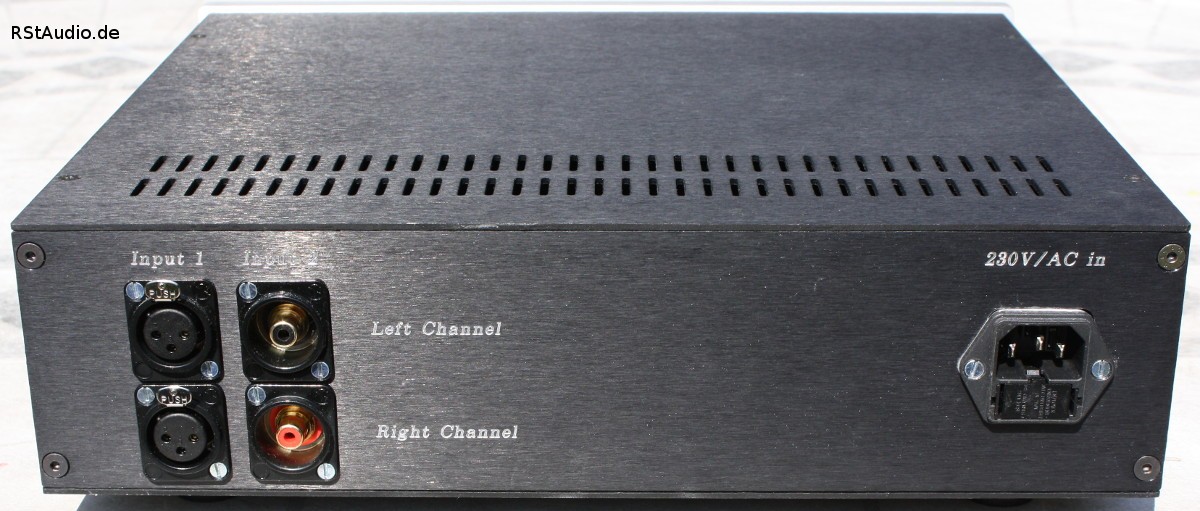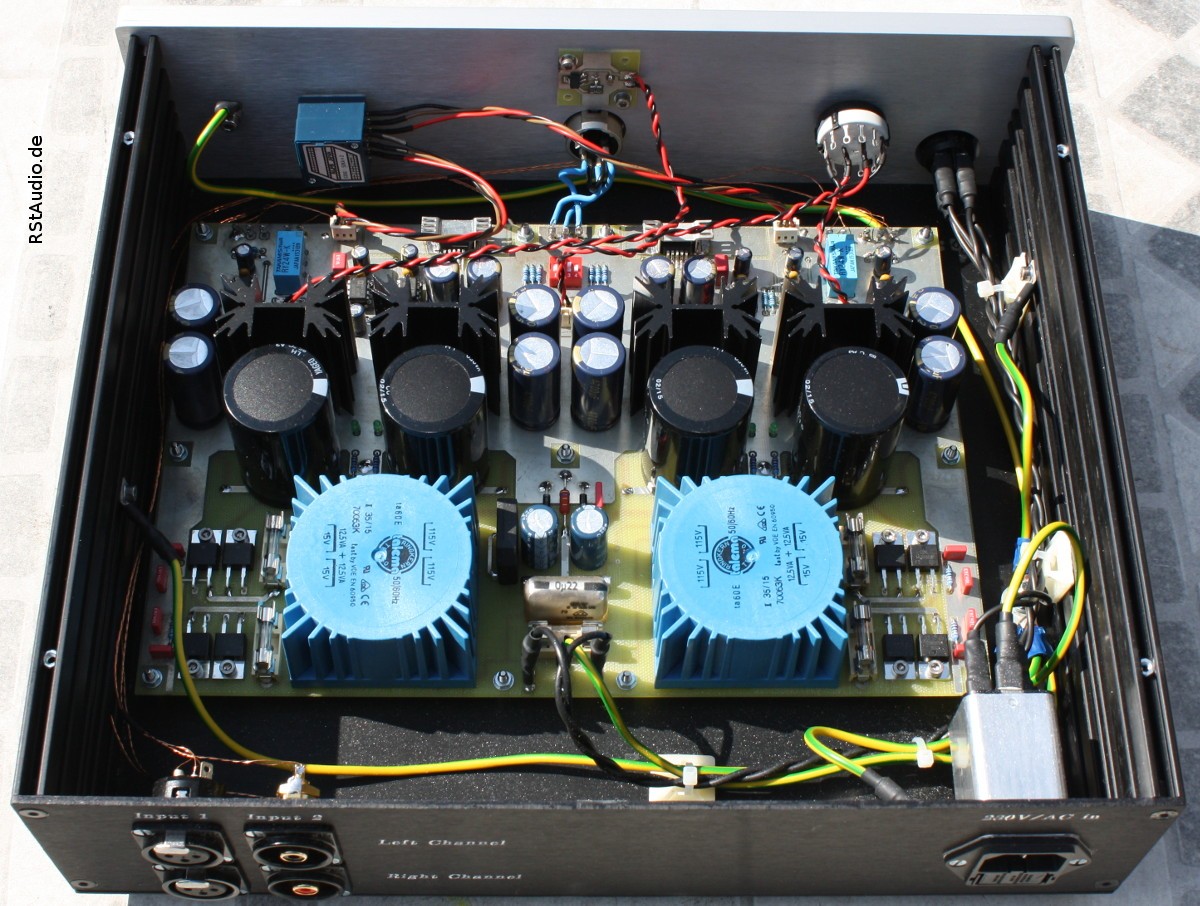
Table of Contents
Introduction
26-07-2021
I started the audiophile hobby at the age of 15 and bought my first stereo. At that time, I had neither the money nor the space for loudspeakers, so I listened with headphones – a Jecklin Float electrostatic. I have very positive memories of this extraordinary head loudspeaker and I have listened to many wonderful hours of music with it.
At the Analog Forum 2013 of the AAA I had the pleasure of listening to a really serious headphone for the first time in a long period of time – a Sennheiser HD800 – and was immediately enthusiastic about this kind of music reproduction. That’s why I decided to design my own headphone amplifier.
Hardware Description
26-07-2021
Over the good two years, I thought through many concepts. In the end, I decided on a relatively simple design using integrated circuits. Based on my very positive experience with the OPA627 in my crossover, I designed the circuit around this operational amplifier. Since this component is wired as a normal non-inverting amplifier, many other types can of course also be used.
230V/AC Supply
The 230V/AC supply is connected to the flat plugs J2 and J3. The earth is connected to J4. Fuse F5 follows directly at the phase input. It is responsible for fusing the entire circuit and should be the least sensitive in terms of selectivity. The X2 capacitors C44, C47 and C48 are used to suppress the mains voltage. C43, C45 and BR1 filter out any DC components in the mains voltage (C46 is not fitted). R15, D10, D11 and C49 are used to connect the earth to the (signal) ground in a defined way. An external LED can be connected to J5 to indicate the operating voltage.
- Circuit Diagram of the 230V/AC Supply
Power Supply
The power supply is – as in most of my designs – completely oversized and is designed as a dual mono power supply. Since a common headphone with a 6.3mm plug has a common ground wired for both channels, however, the grounds of the two power supplies are connected. Both power supplies are identical and so I will only describe one channel here.
A 25VA toroidal transformer is used per channel. The secondary voltages are provided with fuses as the transformer is not short-circuit proof. Snubber networks are connected for both output windings (R1, C1, C2 and R2, C11, C12) which damp the oscillating circuit – inductance of the secondary winding and junction capacitances of the rectifier diodes. The two AC voltages are then rectified by a discrete bridge rectifier with ultra-fast soft recovery diodes.
The symmetrical operating voltage is regulated to ±15V after the 2× 22mF charging electrodes with classic fixed voltage regulators. I use types from New Japan Radio (NJM7815 / NJM7915). 4× 4.7mF Panasonic FC capacitors are used as output capacitors. LEDs, which are supplied by the unregulated operating voltage, are used for visual control of the operating voltage.
- Circuit Diagram of the Power Supply
Amplifier
Since both channels are identical, I will only describe the left channel in the following.
There are 2 inputs. An unbalanced source is connected to LK1 and a balanced source to LK2. The balanced input signal is converted into an unbalanced signal by IC6 (INA134). With Rel1, the input signal is selected with the help of an external switch at J6.
Socket J1 is connected to the relay. One half of an external Alps stereo potentiometer (50kΩ logarithmic) is connected to this. The volume is adjusted with the potentiometer. The amplification of the signal voltage is done with IC5 (OPA627) and the output current is supplied by buffer IC7 (LME49600). Both ICs form a unit because the feedback for IC5 is tapped behind the buffer. With the help of the DIP switch, different amplification factors (here approx. 3dB, 10dB and 20dB) can be set. The circuit around OP177 (IC8) is a servo regulator that provides a DC free output voltage. This eliminates the need for a coupling capacitor at the output.
- Left Channel of the Amplifier
- Right Channel of the Amplifier
Installation in an Enclosure
26-07-2021
As always in the last years, I used a cabinet from Modushop / Hi-Fi 2000 from Italy. I also did the machining myself again using a Datron M35 milling machine. The PCB of the headphone amplifier contains all the components, so all that remains to be done is to add the necessary controls and connectors.
In the picture above you can see that I have installed a 4-pin XLR socket instead of a 6.3 mm jack socket. I converted my headphones to such a plug in order to be able to operate them with a bridge amplifier. Otherwise, the operation is kept very simple according to the circuit. On the left side of the front panel is the power switch, directly next to it the rotary switch for the inputs and on the right side the volume control. The operating voltage light is located in the centre above the headphone connection.
The rear panel is very simple. The two inputs – balanced and unbalanced – and the mains socket are all the headphone amplifier needs.


